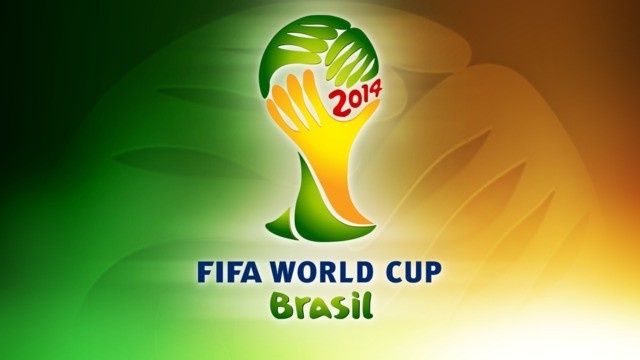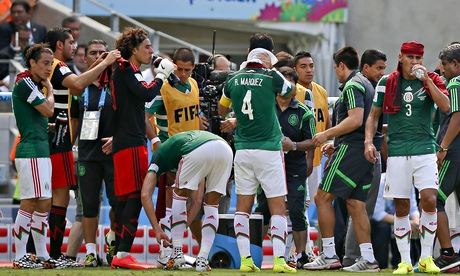It's hot in Manaus. And Fortaleza. And many (but not all) other Brazilian cities where World Cup games are being played. It's humid too, with 80% humidity recorded at the Italy v England game, creating extremely unpleasant conditions. Especially if you're not used to them.
Of course, these footballers are professional athletes and most of the European teams have an entourage of fitness experts to help them to acclimatise. Apparently the Italian squad prepared by running on treadmills in the sauna, and the English 'wore extra layers', which admittedly isn't particularly high-tech and something my Dad used to recommend when we ran out of heating.
It was also outrageously hot at USA 94, when FIFA banned water breaks despite the temperatures soaring to 46 degrees Celsius. John Aldridge had a famous meltdown on the touch-line as players were refused refreshments during the game between Mexico and Ireland. Since then the rules have changed, and FIFA now allows water breaks 'if health professionals deem conditions to be dangerous'.
These breaks are not mandatory, but a Brazilian judge has ruled that the referee must give a water break if any game is played in a temperature above 32 degrees Celsius in the Wet Bulb Globe Temperature index, which takes conditions such as wind speed (or chill), cloud cover, humidity, and UV radiation into account.
To switch sports for a moment, nearly every year there is controversy at the Australian Open as tennis players in Melbourne struggle with blistering heat. In 1998 an Extreme Heat Policy was introduced, with measures such as the ability to close roofs, longer breaks between games and sets, and the possible suspension of matches. In 2007 on-court temperatures reached 50 degrees, and this year not only the players were affected; a ball boy fainted and more than a thousand spectators were treated for heat exhaustion.
So why is this controversial you ask? Because some people say they should just get on with it. Their argument goes that these people are paid (and paid phenomenally well) to entertain us. The conditions are the same for everyone, so no-one has an advantage.
My refutation is partly that the audience or spectators are denied the peak performance of these athletes, because no-one can achieve physical excellence in such heat. Also, basic humanity should stop you from wanting to torture people by forcing them into oven-like situations. They are sports-folk, not gladiators. Surely we don't want to watch them harm themselves? That's not sport; it's sadism.
Thankfully common sense has prevailed, with the introduction of three-minute cooling breaks used for the first time in the game between Mexico and The Netherlands. And officials have clearly realised that it is absolutely ridiculous to host games in places where it is too hot for comfort. Oh, wait... did someone say Qatar?





No comments:
Post a Comment